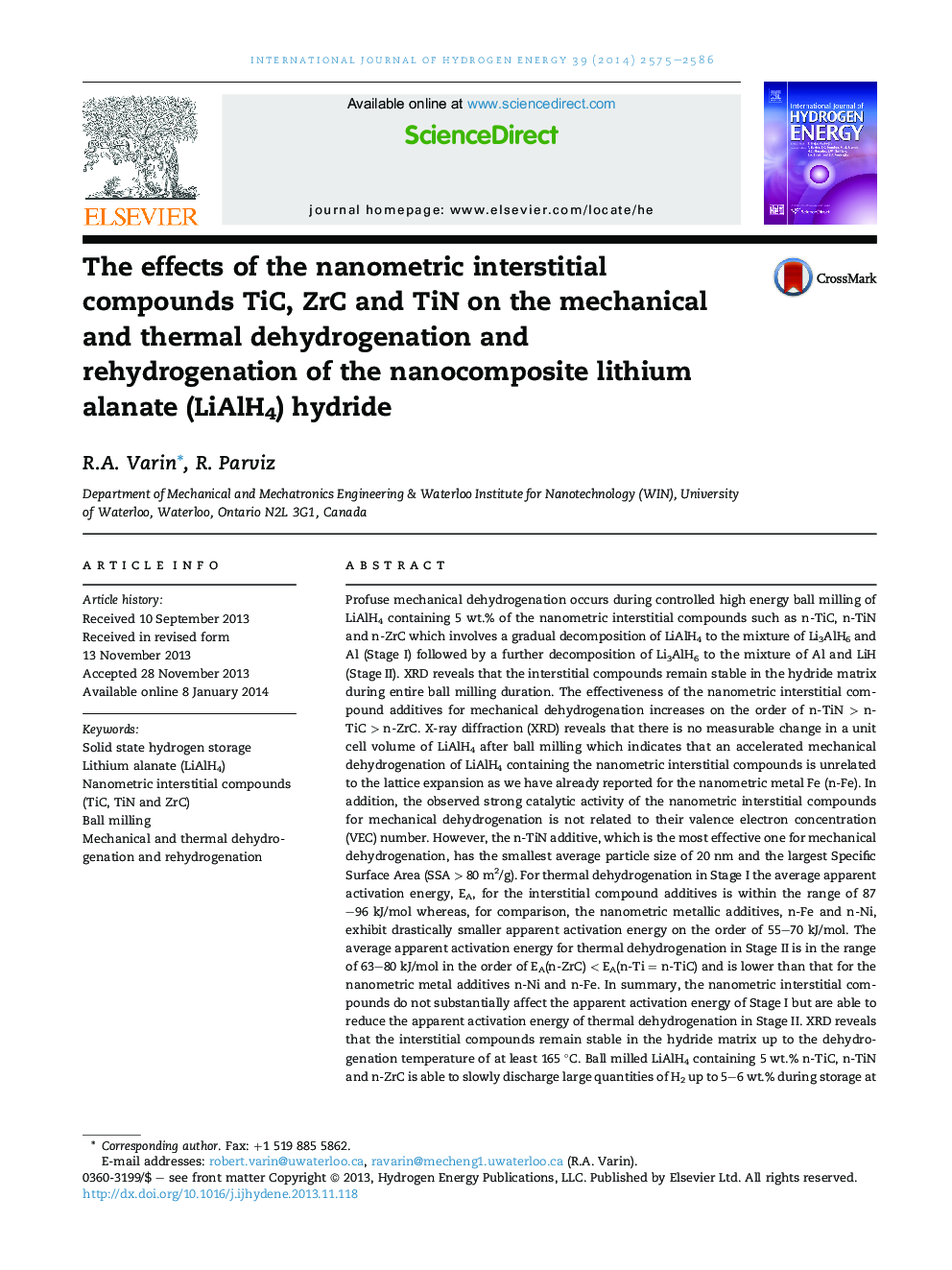| Article ID | Journal | Published Year | Pages | File Type |
|---|---|---|---|---|
| 7720373 | International Journal of Hydrogen Energy | 2014 | 12 Pages |
Abstract
Profuse mechanical dehydrogenation occurs during controlled high energy ball milling of LiAlH4 containing 5 wt.% of the nanometric interstitial compounds such as n-TiC, n-TiN and n-ZrC which involves a gradual decomposition of LiAlH4 to the mixture of Li3AlH6 and Al (Stage I) followed by a further decomposition of Li3AlH6 to the mixture of Al and LiH (Stage II). XRD reveals that the interstitial compounds remain stable in the hydride matrix during entire ball milling duration. The effectiveness of the nanometric interstitial compound additives for mechanical dehydrogenation increases on the order of n-TiN > n-TiC > n-ZrC. X-ray diffraction (XRD) reveals that there is no measurable change in a unit cell volume of LiAlH4 after ball milling which indicates that an accelerated mechanical dehydrogenation of LiAlH4 containing the nanometric interstitial compounds is unrelated to the lattice expansion as we have already reported for the nanometric metal Fe (n-Fe). In addition, the observed strong catalytic activity of the nanometric interstitial compounds for mechanical dehydrogenation is not related to their valence electron concentration (VEC) number. However, the n-TiN additive, which is the most effective one for mechanical dehydrogenation, has the smallest average particle size of 20 nm and the largest Specific Surface Area (SSA > 80 m2/g). For thermal dehydrogenation in Stage I the average apparent activation energy, EA, for the interstitial compound additives is within the range of 87-96 kJ/mol whereas, for comparison, the nanometric metallic additives, n-Fe and n-Ni, exhibit drastically smaller apparent activation energy on the order of 55-70 kJ/mol. The average apparent activation energy for thermal dehydrogenation in Stage II is in the range of 63-80 kJ/mol in the order of EA(n-ZrC) < EA(n-Ti = n-TiC) and is lower than that for the nanometric metal additives n-Ni and n-Fe. In summary, the nanometric interstitial compounds do not substantially affect the apparent activation energy of Stage I but are able to reduce the apparent activation energy of thermal dehydrogenation in Stage II. XRD reveals that the interstitial compounds remain stable in the hydride matrix up to the dehydrogenation temperature of at least 165 °C. Ball milled LiAlH4 containing 5 wt.% n-TiC, n-TiN and n-ZrC is able to slowly discharge large quantities of H2 up to 5-6 wt.% during storage at 40 °C. Unfortunately, the results of rehydrogenation at 165 °C under 95 bar for 5 h indicate that LiAlH4 containing the nanometric interstitial compounds exhibits no rehydrogenation.
Related Topics
Physical Sciences and Engineering
Chemistry
Electrochemistry
Authors
R.A. Varin, R. Parviz,
